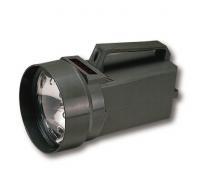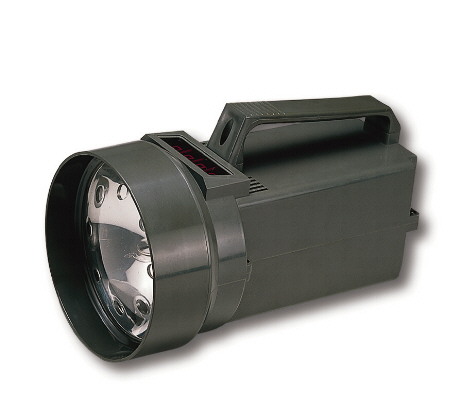DT-2239A Digital Stroboscope Product ID: DT-2239A
DT-2239A
Digital Stroboscope
The model DT-2239A is a microprocessor circuit design, high accuracy, digital readout, light duty STROBOSCOPE/TACHOMETER that is ideal for inspecting and measuring the speed of moving gears, fans, centrifuges, pumps, motors and other equipment used in general industrial maintenance, production, quality control, laboratories and as well as for schools and colleges for demonstrating strobe action.
Features:
The digital stroboscope measures the speed by simply aiming the beam to the object, adjusting and synchronizing the flash rate such that a still picture is seen. The xenon lamp is very bright to allow room light operation at long distance. Ideal for checking rotating fan, motor, pump, conveyer and robot. Used widely in auto and fan maintenance, production, packaging and laboratory
- DT-2239A Spcifications:
- Flash Rate 100 to 10,000 flashes per minute (FPM)
- Display 4 digits, 0.3"" LED
- Resolution 0.1 FPM or 1 FPM
- Accuracy +/- 1 digit (100 to 5,000 FPM), +/- 0.05%(over 5,000 FPM)
- Sampling Time 1 second
- Flash Tube Xenon lamp
- Flash Color Xenon white 6,500 deg K
- Flash Duration 60-100 µsec
- Flash Energy 4 Watt-seconds (Joules)
- Beam Angle 80 degree
- Size 8.3"" x 4.8"" x 4.8""
- Weight 2.2 lbs
- Power 110V +/-15%, 50/60 Hz or 220V +/- 15%, 50/60 Hz (Order to made)
- Accessory Power Cord (UL, British, or VDE available)
The stroboscopic principle, also known as the flash synchro-tachometer principle, is a method used to measure whether a continuously cyclically moving object is slowly moving or fixed. The principle is used to study objects that rotate, reciprocate, oscillate or vibrate. The rotation of mechanical parts and rotating body objects such as vane fan motors are common examples of observations. The simplest form of observation is to adjust the speed of the stroboscopic meter using a rotating disk with evenly spaced holes placed in insight between the observer and the rotating target. The speed is adjusted so that it becomes synchronized with the motion observation system, which can be slowed down or stopped. Illusions are the persistence of vision due to differences in time, often referred to as the flicker effect. The light emission of the stroboscope can be easily and quickly controlled by adjusting the variable resistor. Make the flash frequency adjusted so that it is a cycle speed equal to or a unit counts lower or higher than the object's cycle speed, at which point objects that rotate the object will all be seen as stationary in sync, or moving or forward or backward, depending on the flash's frequency.
| SPECIFICATIONS | |||
| Display | 0.3" LED, 4 digits | Power Supply | 110 Vac 10%, 50/60 Hz |
| or 220 Vac 10%, 50/60 Hz | |||
| or 230 Vac 10%, 50/60 Hz | |||
| Stroboscopic Flash Rate | 100 to 10,000 flashes per minutes (FPM) | Power Consumption | Less than 30 Watt |
| Accuracy | 100 to 5,000 FPM/RPM) - ± 1 digit | Operating Temp. | 0 to 50 (32 to 122 ). ℃℉ |
| over 5000 FPM/RPM -± 0.05% | Operating Humidity | Less than 80% R.H. | |
| Resolution | Less than 10,000 FPM/RPM- 1 FPM/RPM | Weight | 1Kg/2.2 LB |
| Over 10,000 FPM/RPM - 10FPM/RPM | Housing | Compact and impact plastic injection case with plastic mirror type reflector | |
| Sampling Time | 1 second | Calibration | Crystal time base and microprocessor circuit, don’t necessary take any external calibration process. |
| Range Select | Automation | Accessories Included | Operation manual……1 PC. |
| Circuit | This stroboscope/tachometer employs an custom one-chip of microcomputer LSI circuit & crystal control time base which results in extraordinary accuracy over a wide, dynamic range. | ||


